
How to Use VOLT MPPT 10A: Examples, Pinouts, and Specs
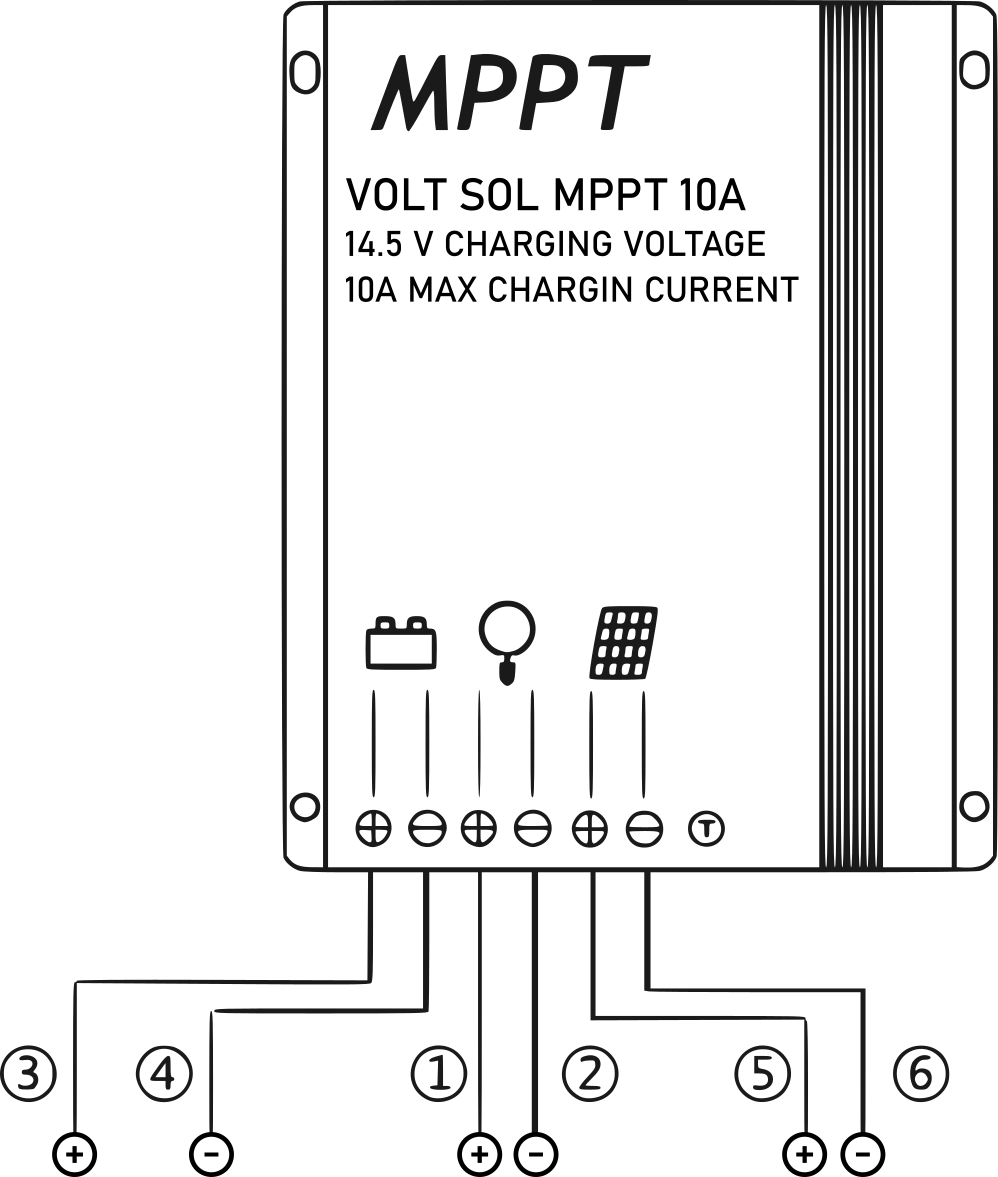
 Design with VOLT MPPT 10A in Cirkit Designer
Design with VOLT MPPT 10A in Cirkit DesignerIntroduction
The VOLT MPPT 10A (Manufacturer Part ID: 5903760240141) is a high-efficiency Maximum Power Point Tracking (MPPT) solar charge controller designed to optimize energy harvest from solar panels. By dynamically adjusting the operating point of the solar panel, it ensures maximum power transfer to the connected battery or load. This device is capable of handling up to 10A of current, making it suitable for small to medium-sized solar power systems.
Explore Projects Built with VOLT MPPT 10A
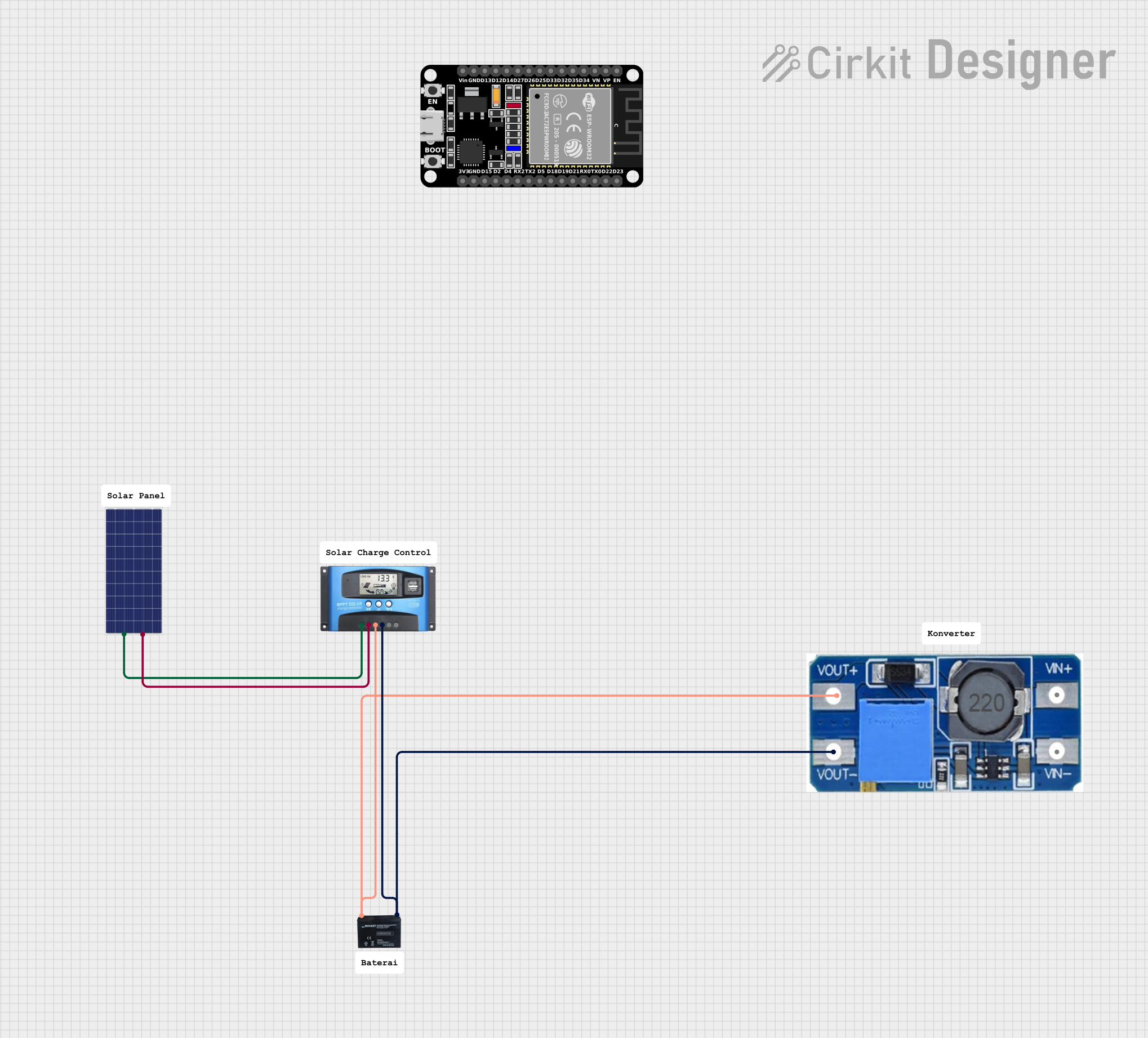
 Open Project in Cirkit Designer
Open Project in Cirkit Designer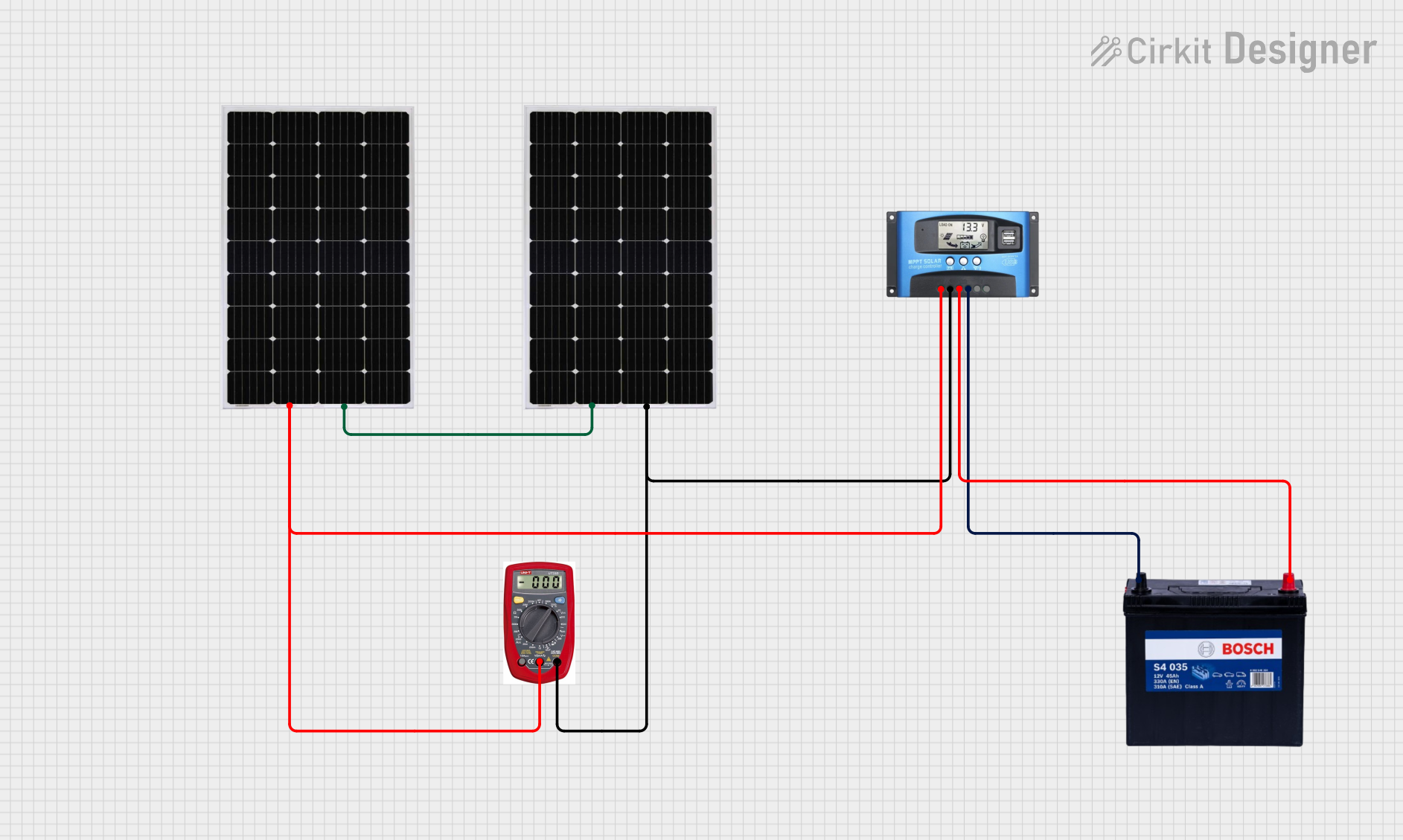
 Open Project in Cirkit Designer
Open Project in Cirkit Designer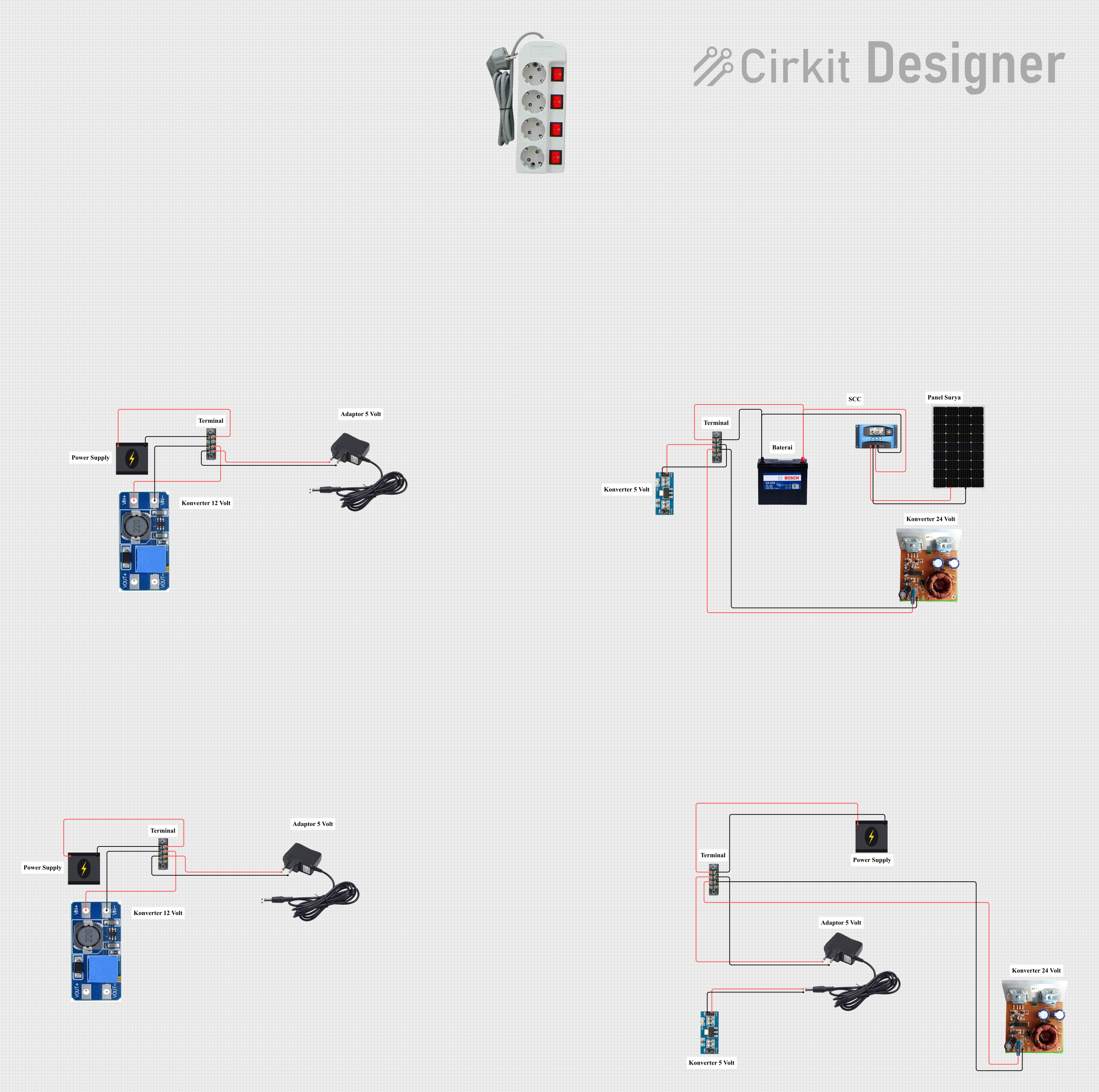
 Open Project in Cirkit Designer
Open Project in Cirkit Designer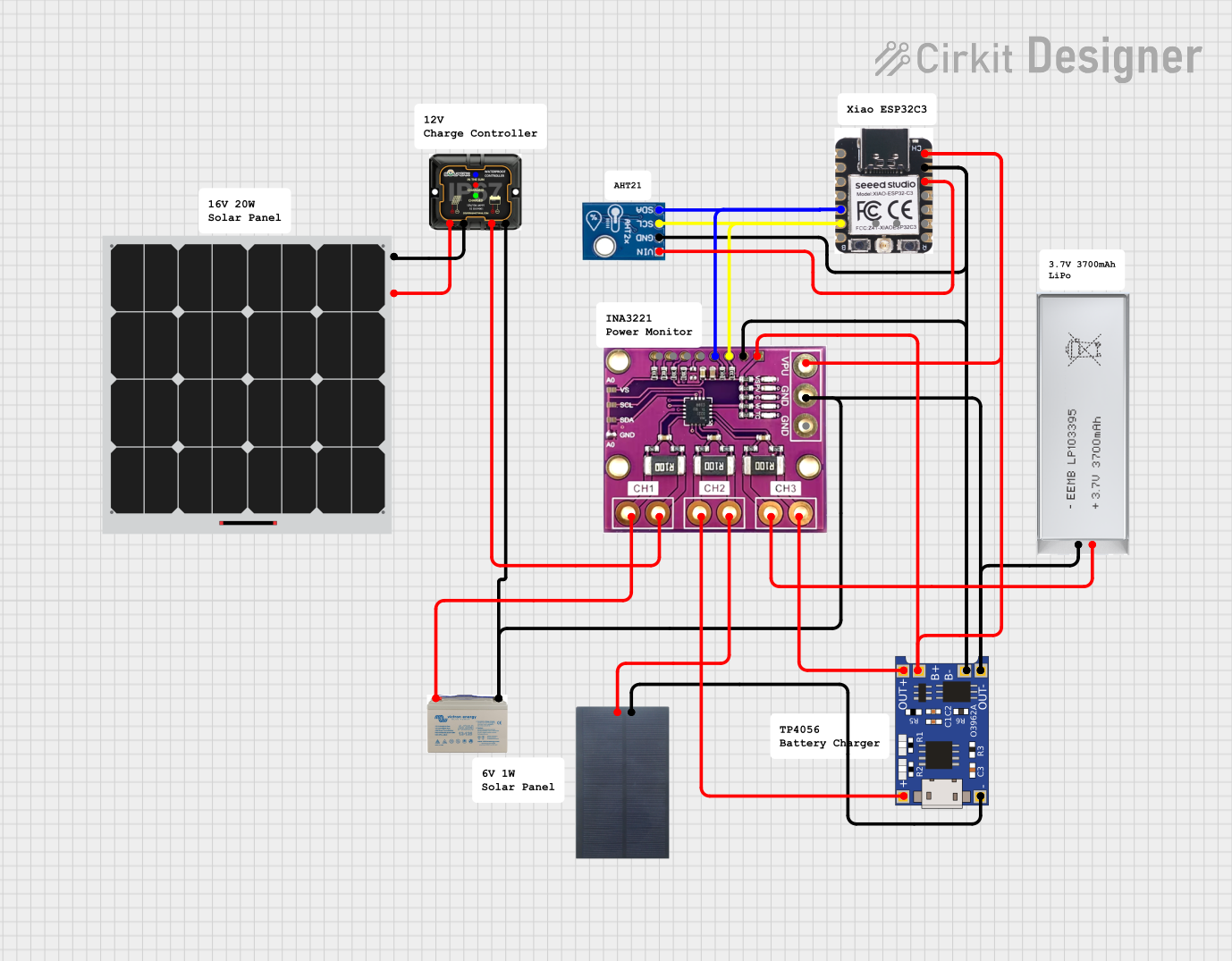
 Open Project in Cirkit Designer
Open Project in Cirkit DesignerExplore Projects Built with VOLT MPPT 10A

 Open Project in Cirkit Designer
Open Project in Cirkit Designer
 Open Project in Cirkit Designer
Open Project in Cirkit Designer
 Open Project in Cirkit Designer
Open Project in Cirkit Designer
 Open Project in Cirkit Designer
Open Project in Cirkit DesignerCommon Applications and Use Cases
- Off-grid solar power systems for homes, cabins, or RVs
- Solar-powered lighting systems
- Battery charging for 12V or 24V systems
- Renewable energy projects requiring efficient solar energy utilization
Technical Specifications
Below are the key technical details of the VOLT MPPT 10A:
| Parameter | Value |
|---|---|
| Input Voltage Range | 12V/24V auto-detection |
| Maximum Input Voltage | 50V |
| Maximum Output Current | 10A |
| Efficiency | Up to 98% |
| Battery Voltage Options | 12V/24V |
| Operating Temperature | -20°C to +60°C |
| Dimensions | 150mm x 85mm x 40mm |
| Weight | 350g |
Pin Configuration and Descriptions
The VOLT MPPT 10A features the following terminal connections:
| Pin/Terminal | Description |
|---|---|
| Solar Panel (+) | Positive input terminal for the solar panel |
| Solar Panel (-) | Negative input terminal for the solar panel |
| Battery (+) | Positive output terminal for the battery connection |
| Battery (-) | Negative output terminal for the battery connection |
| Load (+) | Positive terminal for the connected load |
| Load (-) | Negative terminal for the connected load |
Usage Instructions
How to Use the VOLT MPPT 10A in a Circuit
Connect the Battery:
- Always connect the battery to the controller first. Use the
Battery (+)andBattery (-)terminals to connect the positive and negative leads of the battery, respectively. - Ensure the battery voltage matches the controller's supported range (12V or 24V).
- Always connect the battery to the controller first. Use the
Connect the Solar Panel:
- Connect the solar panel to the
Solar Panel (+)andSolar Panel (-)terminals. - Ensure the panel's open-circuit voltage does not exceed 50V.
- Connect the solar panel to the
Connect the Load (Optional):
- If you wish to power a load directly, connect it to the
Load (+)andLoad (-)terminals. - Ensure the load current does not exceed the controller's 10A limit.
- If you wish to power a load directly, connect it to the
Power On:
- Once all connections are secure, the controller will automatically detect the system voltage (12V or 24V) and begin operation.
Important Considerations and Best Practices
- Battery First: Always connect the battery before connecting the solar panel to avoid damaging the controller.
- Proper Sizing: Ensure the solar panel's power output and the battery's capacity are within the controller's specifications.
- Ventilation: Install the controller in a well-ventilated area to prevent overheating.
- Polarity: Double-check all connections for correct polarity to avoid damage.
- Firmware Updates: Check the manufacturer's website for any firmware updates or additional features.
Arduino UNO Integration Example
While the VOLT MPPT 10A is not directly programmable, it can be monitored using an Arduino UNO and a voltage/current sensor. Below is an example code snippet to monitor the battery voltage:
// Example code to monitor battery voltage using Arduino UNO
// Ensure you connect a voltage divider to scale down the battery voltage
// to a safe range for the Arduino's analog input (0-5V).
const int batteryPin = A0; // Analog pin connected to the voltage divider
const float voltageDividerRatio = 5.0; // Adjust based on your resistor values
void setup() {
Serial.begin(9600); // Initialize serial communication
pinMode(batteryPin, INPUT); // Set the battery pin as input
}
void loop() {
int rawValue = analogRead(batteryPin); // Read the analog value
float batteryVoltage = (rawValue / 1023.0) * 5.0 * voltageDividerRatio;
// Print the battery voltage to the Serial Monitor
Serial.print("Battery Voltage: ");
Serial.print(batteryVoltage);
Serial.println(" V");
delay(1000); // Wait for 1 second before the next reading
}
Troubleshooting and FAQs
Common Issues and Solutions
Controller Not Powering On:
- Cause: Battery not connected or low voltage.
- Solution: Ensure the battery is properly connected and has sufficient charge.
Solar Panel Not Charging the Battery:
- Cause: Incorrect wiring or insufficient sunlight.
- Solution: Verify the solar panel connections and ensure the panel is exposed to direct sunlight.
Load Not Receiving Power:
- Cause: Load current exceeds 10A or incorrect wiring.
- Solution: Check the load's current requirements and verify the wiring.
Overheating:
- Cause: Poor ventilation or excessive current.
- Solution: Install the controller in a well-ventilated area and ensure the current is within limits.
FAQs
Q: Can I use this controller with a 36V battery system?
A: No, the VOLT MPPT 10A only supports 12V and 24V battery systems.Q: Does the controller support lithium-ion batteries?
A: Yes, but ensure the battery's voltage and charging profile are compatible with the controller.Q: How do I reset the controller?
A: Disconnect all connections (battery, solar panel, and load), wait for 30 seconds, and reconnect.Q: Can I use this controller indoors?
A: Yes, but ensure proper ventilation and avoid exposure to moisture.
By following this documentation, users can effectively utilize the VOLT MPPT 10A for their solar energy projects.